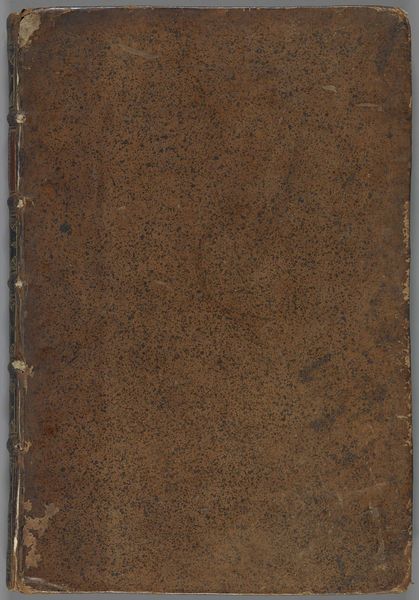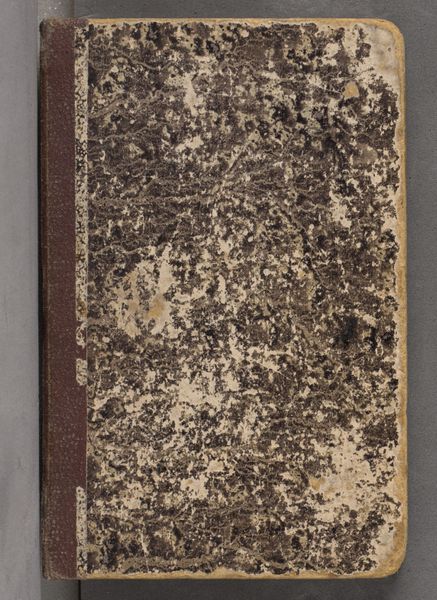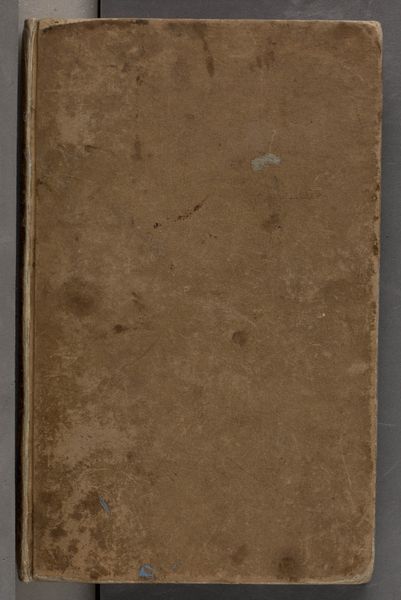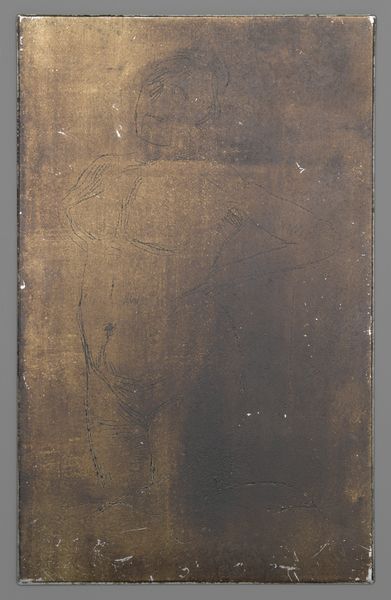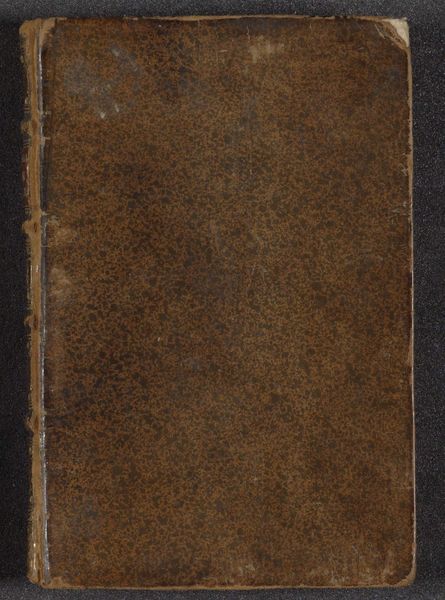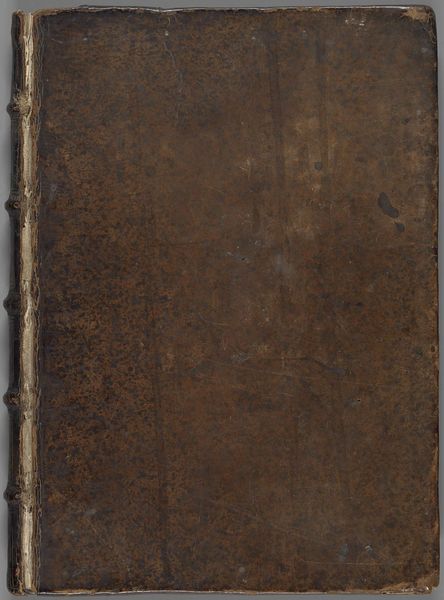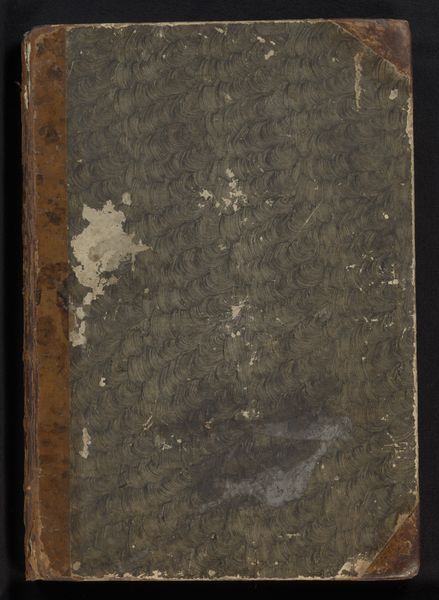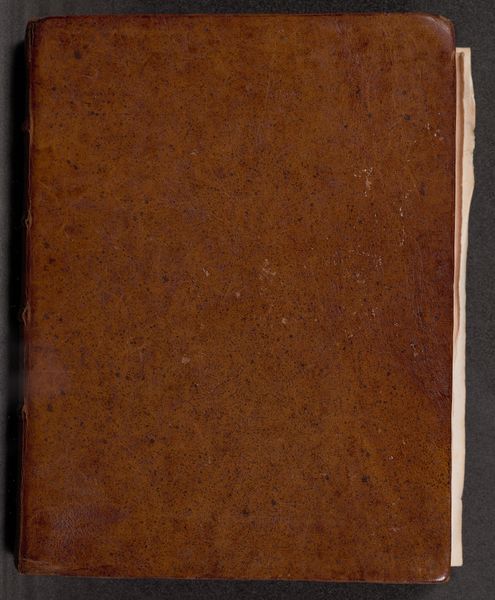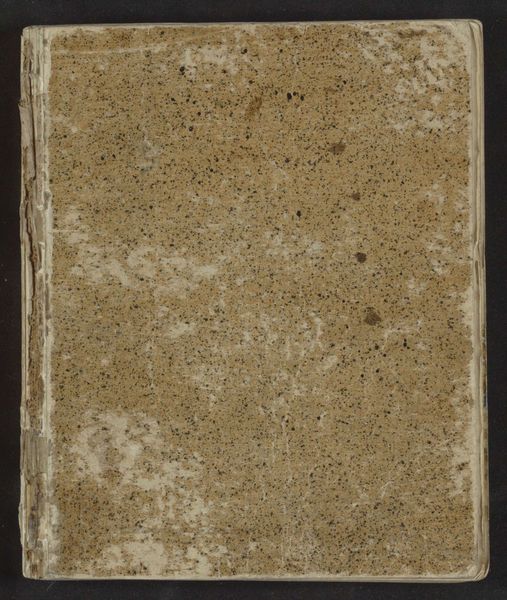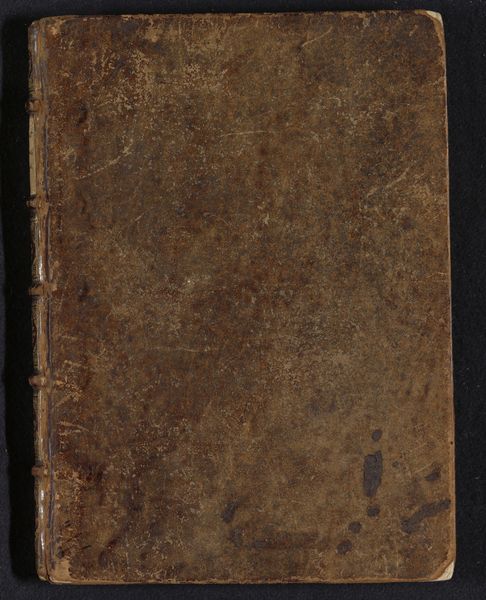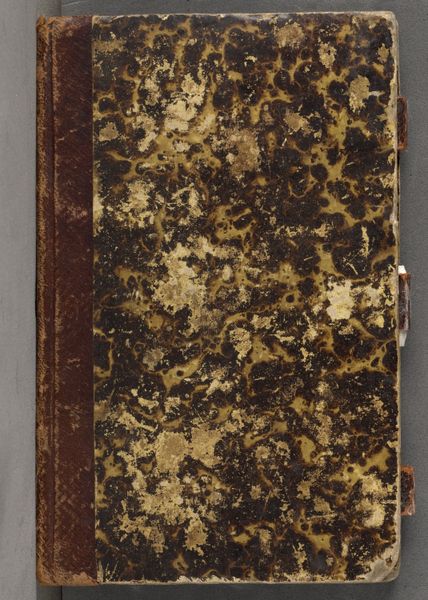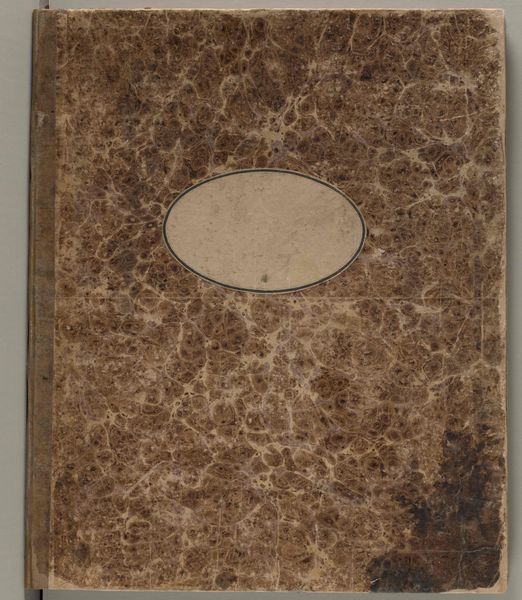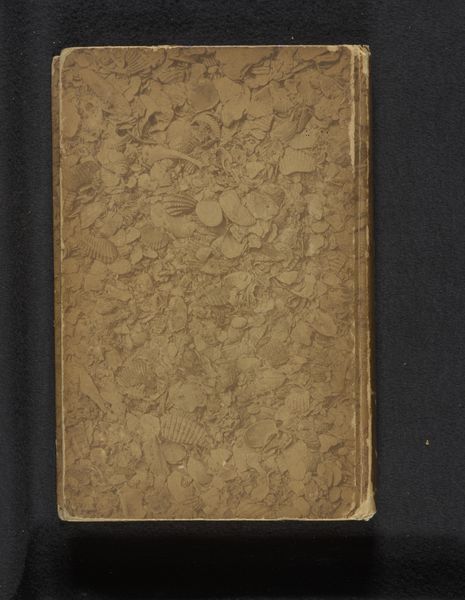
drawing, mixed-media, paper, ink
#
drawing
#
mixed-media
#
16_19th-century
#
paper
#
ink
#
romanticism
#
mixed media
#
watercolor
Copyright: Public Domain
Editor: We are looking at *Skizzenbuch*, a sketchbook attributed to Johannes Thomas, probably made between 1828 and 1830. The cover presents a pattern achieved with mixed media. Its somewhat distressed texture suggests age and use. How would you approach analyzing this object? Curator: My primary focus is the formal properties of the book as an object. Notice the swirling patterns. How do these swirling patterns activate the surface and imply movement even in a static object? Editor: That's a great point. It almost looks like the currents of a riverbed, which contributes to the sketchbook's mysteriousness. Considering the patterns, is it possible to discern a certain system that was applied? Curator: The cover’s marbling technique might follow certain traditions, yet the apparent irregularities suggest either an experiment or simply the effects of time on the materials. Note how the reddish-brown spine contrasts and complements the mottled cover, framing the visual field. Does this framing device heighten your perception of the overall form? Editor: Yes, it defines the shape, containing that sense of movement. If the purpose of art is to disrupt people's perception, then wouldn’t these notebooks—being more like artifacts of one’s person or collections—disrupt less? Curator: It is precisely through this interaction of visual elements - the patterns, colors, textures, and form - that the work achieves its aesthetic presence. Editor: That emphasis on visual elements offers such a solid perspective from which to assess artwork. It’s fascinating to realize how much can be derived from the intrinsic aspects of the object. Curator: Indeed. A careful examination of its physical components provides entry points into richer art interpretation.
Comments
No comments
Be the first to comment and join the conversation on the ultimate creative platform.
